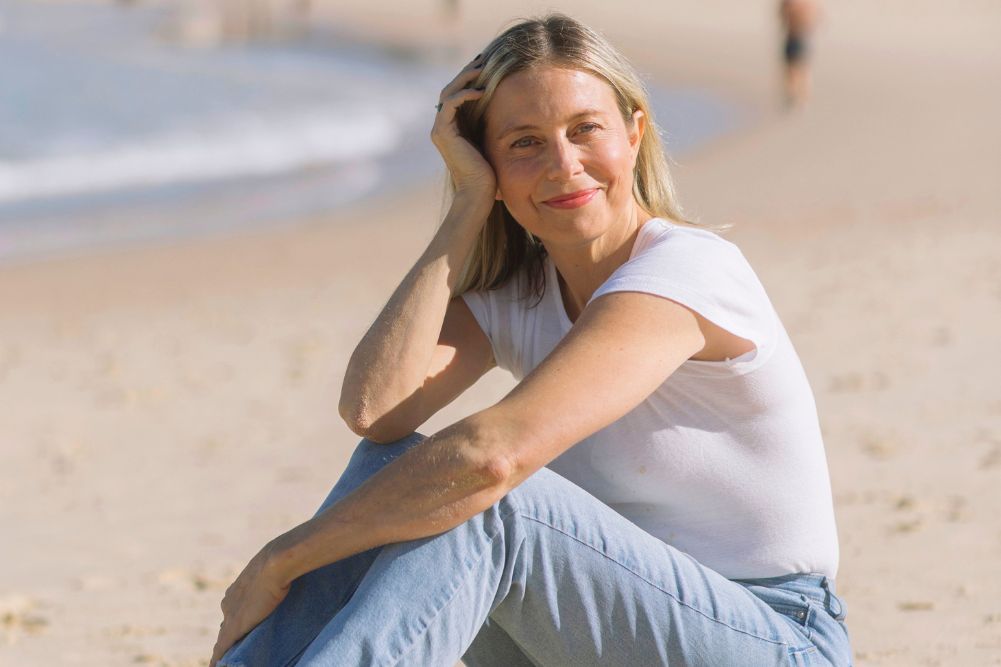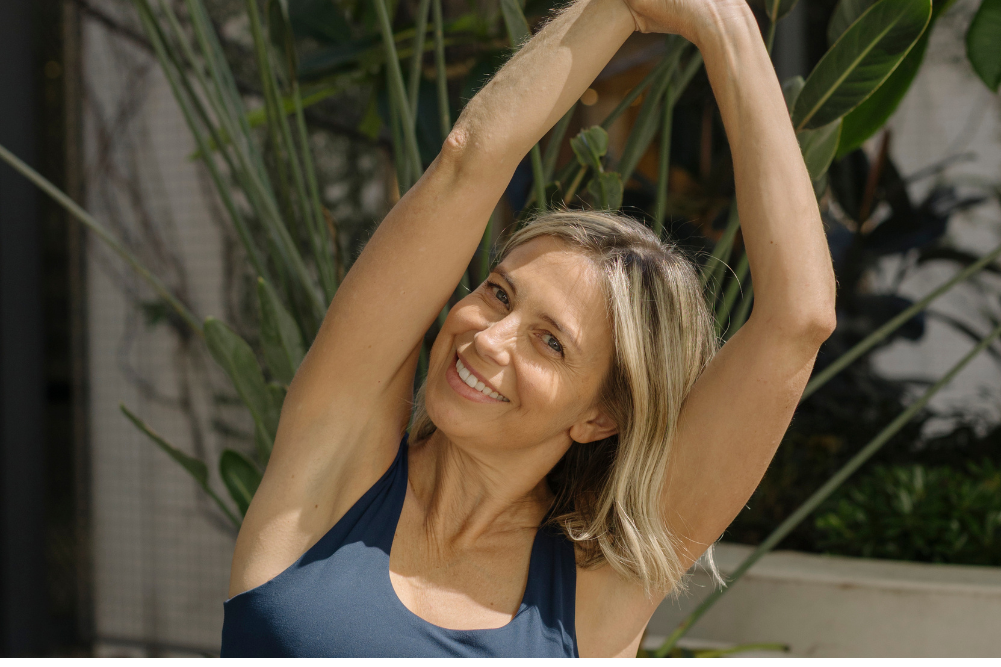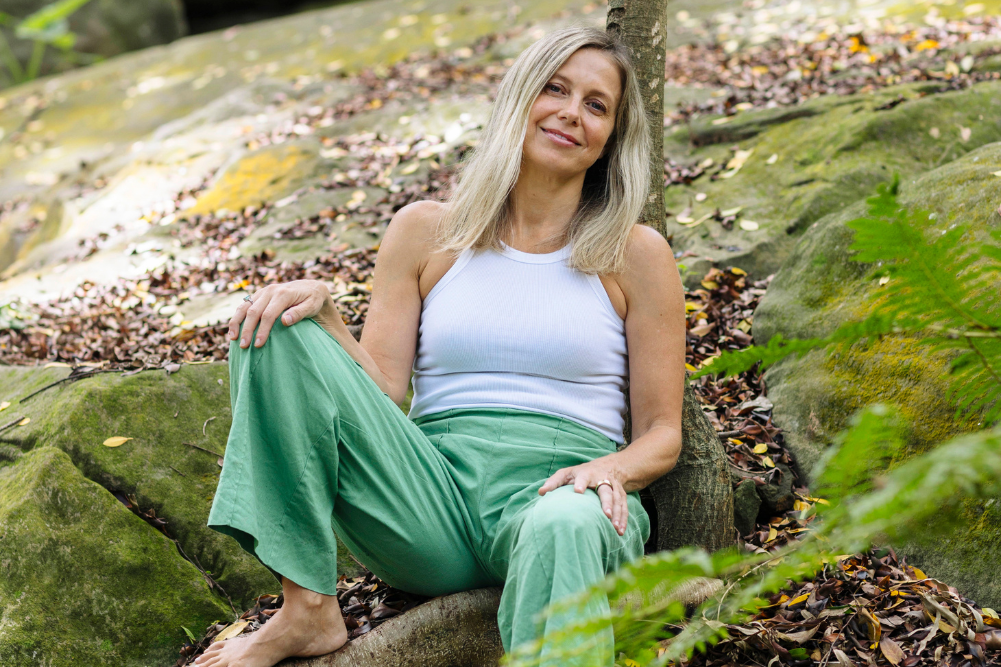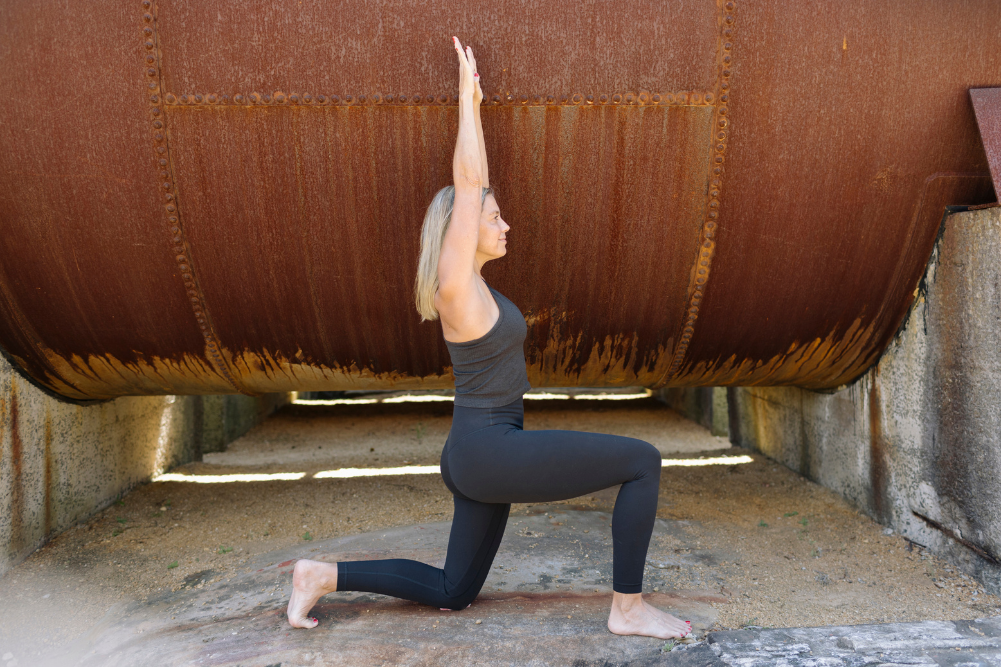Does your yoga practice suit your body type?
Does your style of yoga always leave you feeling light, flexible, clear and calm? If not, it could be aggravating your body type. Ayurveda is the science of self-healing and yoga the science of self-realisation. Practised together, the two inform each other and evolve your health for peace, pure energy and love.
The three doshas
Your Ayurvedic constitution is determined at birth, influenced by the constitutions of both parents and your mother’s prenatal diet. Your constitution is made up of one dosha (bodily humor), or a combination, usually with one predominating.
Doshas are:
- Vata:air/ether, is cold, dry, irregular
- Pitta: fire/water, is hot, oily, irritable
- Kapha: earth/water, is cold, wet, stable
Through pulse and tongue analysis and other observations, an Ayurvedic doctor diagnoses and prescribes herbs, treatments and diet and lifestyle changes according to your unique, individual situation.
With some basic Ayurvedic understanding, you can recognise your tendencies and habits and reduce imbalance through yoga. The aim of combining yoga with Ayurveda is to minimise the “decaying” qualities of the doshas and elevate their subtle aspects for a higher purpose on the path of sattvic (pure) living.
Vata
Vata people are unusually tall or short with thin frames and narrow shoulders and/or hips. They often have wiry hair, receding gums, poor circulation and joints that crack. Their dry skin can be susceptible to dry eczema. They love the summer heat and tan easily. When imbalanced, they “space out”, are inconsistent and highly strung, and fatigue quickly. Vata reacts to stress with fear or anxiety, choosing “flight” over “fight”. They are highly changeable and sensitive. When balanced, vata is intuitive, creative and peaceful.
Ground vata with gentle yoga
Ayurveda advises to “treat vata like a flower that easily wilts”. The vata personality needs to feel safe, with a calming, grounding, stabilising practice. As vata is the principle of movement in the body, all well-rounded yoga practices begin and conclude with slow, vata-balancing movements.
Holistic doctor and Ayurveda and yoga therapist Dr Shaun Matthews (ayurvedichealing.com.au) says there are common things people do in yoga that don’t serve them. Vata people tend towards a strong practice that leaves them depleted, he says. “They can overtax their kidneys and weaken their adrenals … they need to find a practice with a meditative focus and slow movements” such as a gentle Hatha class, or styles like Sivananda or Integral Yoga.
The vata personality needs to feel safe, with a calming, grounding, stabilising practice.
Vata needs to release nervous tension through asanas (yoga postures) and release stiffness from the joints. Joint rotations, gentle holding poses and slow, controlled movements with conscious breathing are ideal. For vata, there needs to be a focus on core stability, the pelvic region and colon, and joints of the lower body.
David Frawley in Yoga for Your Type says, overall, standing poses and forward bends relieve vata, while backbends increase it if done excessively or unconsciously, so be gentle. A long savasana (lying-down relaxation) is highly recommended.
Vata rules old age, so most older yogis will benefit from gentle, vata grounding styles.
Pitta
Pitta people are often medium build, with strong appetites and oily skin. They burn easily, suffer rashes and skin inflammations and are warm to touch. Pittas are strong-willed, intelligent, ambitious and focused. With imbalance, they criticise others and under stress they anger, choosing “fight” over “flight”. Balanced pitta is energetic, enthusiastic and discerning, with transformative abilities.
Pacify pitta with cooling practices
Pitta governs digestion, assimilation and nutrition. Mukunda Stiles in Ayurvedic Yoga Therapy says self-discipline and purification evolve pitta, giving “the mind strength and the capacity for directing willpower into radiant discrimination”.
Ayurveda advises to “treat pitta like a friend” and Partner Yoga is a good practice for pittas. Matthews says, “Pitta students tend to be intense and perfectionist, which can lead to injury because pittas often have a ‘no pain, no gain’ attitude.” He advises that pittas need to “find relaxation within the practice [through a] lighter style [of yoga] that frees their minds”. Pitta yogis ideally need a cooling and calming style of yoga that reduces inflammation and acidity within the body.
Easy closing postures, gentle backbends with breath awareness, twists and all forward bends are most effective for reducing excess pitta.
According to Frawley, Pittas need to “remain soft and flexible throughout their lives, to prevent them becoming hot, stiff and too tight”. He says their greatest challenge and reward are to “maintain a soft and gentle approach”. Easy closing postures, gentle backbends with breath awareness, twists and all forward bends are most effective for reducing excess pitta, guides Frawley. Asanas aimed at reducing pitta “release heat and stress from the small intestine and central abdomen, cooling the blood and liver”, he explains. Stiles recommends poses that apply pressure to the navel region and the solar plexus, massaging the liver and spleen.
Inverted (upside-down) poses are heating, so pittas should limit time in headstands and armstands. Shoulderstand is cooling, however, and recommended. Relaxing floor postures that calm and centre, and a savasana that is long enough to benefit without irritating the pitta personality, will help.
Pitta rules mid-life: a time of building career and family. Pitta-pacifying yoga can be considered when overactivity or intensity needs addressing, no matter your constitution.
Kapha
Kapha people are usually heavier set or stocky, earthy types who have large eyes and damp/cool skin with good circulation. They gain weight easily and have difficulty losing it. Under stress they become complacent, or “freeze”. With imbalance, they become over-attached, possessive and greedy. Balanced kapha is nurturing, patient, humble, compassionate and open-hearted.
Reduce kapha with vigour & devotion
Kapha means “that which holds together”. It lubricates joints, heals wounds and promotes growth.
To reduce kapha excess through yoga, Ayurveda recommends focusing on strength, stamina and cleansing practices. For kaphas, yoga needs to be active, sweaty, regular, vigorous and beneficial for the heart and lungs. Practices that build stamina and include heat-producing poses, inversions and backbends are good for kapha. “Both flexing and strengthening will lighten and refresh the kapha experience of life,” Frawley says.
“Both flexing and strengthening will lighten and refresh the kapha experience of life.”
Matthews recommends styles like Ashtanga and Power Yoga for kaphas. He says kaphas need the most guidance from a yoga teacher, otherwise they won’t push themselves at all.
A kapha-reducing yoga practice aims to normalise weight, reduce congestion and give a sense of detachment. Stiles suggests extended exhalation with an audible sigh, which “helps to open hidden, repressed emotions and to release sadness, lethargy and attachments to unfulfilled desires, while promoting courage, hopefulness, faithfulness and humility”.
As kapha is the age of childhood, yoga programs that get the child moving and clear the congestion assist in minimising common childhood colds and flus.
Programs & adaptation
In his book, Yoga for Your Type, David Frawley has designed both instant and week-by-week, long-term, multi-level programs for each dosha type. Each program is designed to reduce the buildup of doshic excess at their primary sites of accumulation (stomach for kapha, small intestine for pitta, large intestine for vata).
You can adapt your approach to your chosen style of yoga to balance your Ayurvedic needs. If vata predominates, slow down, practise regularly and allow for gentle holds with concentration and breath control. Check in throughout your practice and adapt it if you start spacing out. Pittas can feel stimulated but could “take it easy”, reducing time in holding postures, relaxing effort and cooling off.
Here, the check-in involves observing your level of intensity and the need to pull back. Kaphas need a more vigorous approach with stamina, movement and strength while cultivating an attitude of devotion. If, during your check-in, you honestly observe that you’re taking shortcuts, ramp up your efforts with kapha guidelines and seek guidance from your yoga teacher.
May your health be “established in the self” (svastha), may yoga help balance your doshas and awaken you to peace (as prana), light (as tejas) and love (as ojas).
An Ayurvedic yoga sequence
A well-balanced asana practice harnesses four sequential components:
- Balancing vata with gentle movement and harmonious breathing
- Stimulating (without aggravating) pitta, stretching muscle tissues
- Balancing kapha, with vigorous asana, stronger holding poses and devotion
- Winding down with grounding, gentle vata poses and meditation
For this sequence, you will need two folded blankets, three eye pillows if you have them and a bolster.
Seated, centre your breath. Apply sattvic intentions for peace, clarity, enjoyment, vitality and balance.
Link breath to movement with joint rotations, circling ankles, then knees, hips, wrists, elbows and shoulders, then perform slow neck rolls.
Perform rounds of surya namaskar, or sun salutations, if you are familiar with them. Kaphas can extend holding downward-facing and upward-facing dog and plank pose, and practise jumping in the series, while vata should step instead.
Eagle pose (garudasana)

Standing, inhale, bring arms out to sides. Exhale, bend knees, bring elbows to cross, right on top of left. Bend elbows, raising arms, bring hands together or hold what you can. Draw shoulders down, bring elbows to shoulder height. Lift left leg and hook top of left foot behind right calf. Breathe. Repeat on other side. Kaphas can work deeply, bending further, extend the timing, and build their stamina.
Warrior I (virabhadrasana I)

Standing feet together, hands in prayer. Exhale, step right foot one leg length behind you as you raise arms up. Square hips. Move abdomen towards spine, lift ribs away from hips, bend left leg so knee is in line with ankle joint. Bring hands together, if comfortable, look up toward thumbs. Draw shoulders down. Breathe. Vata to be gentle, concentrate and extend the joints.
Crocodile pose (makarasana)


Lie face down on mat. Clasp hands together behind head, holding head. Pull abdomen toward spine, lift head off floor. Remaining looking down at mat as you bring elbows out to sides, lifting torso further off floor. Breathe. Release, rest head on hands on mat. Pittas can feel the challenge of the backbend while easing off the intensity. Kaphas need to reduce rest time at the release.
Half lord of the fishes (ardha matsyendrasana)
Seated on a three-fold blanket, bend knees, place left foot under right leg outside of right hip. Step right foot over left leg, standing foot on outside of left hip. Press right hand into floor by right side as you lift spine on inhalation. Lift left arm up. Exhale, twist toward right, placing outside of left elbow against outside of right knee. Inhale, lift spine, exhale, then twist with every breath. Repeat on other side.

Three-limbed facing intense stretch to the west (triang mukhaikapada paschimottanasana)
Seated, legs straight in front, place one or two three-fold blanket underneath left buttock. Bring right foot behind, alongside right buttock. Using fingers, turn right calf out from under thigh. Inhale arms overhead, exhale with a straight spine, pivot forward from hips, placing hand on right foot or leg. Kapha to work to safety, challenging themselves in the pose while reducing the hold of the forward bend.

Shoulderstand (sarvangasana)
Carefully stack two half-fold blankets on floor. Lie down with shoulders on blankets, head and neck on floor. Bend knees, curl pelvis then back torso away from floor. Raise pelvis over shoulders so torso is perpendicular to the floor as you bring hands up your back for support, elbows in line with shoulders. Straighten legs, soften gaze. Remain in pose for a few minutes. Vata can keep feet resting on a wall, knees bent in a half position if they choose.

Note: Do not perform this pose if you are pregnant, menstruating or have high blood pressure.
Corpse pose (savasana)

Lie down on mat, slightly tuck chin to chest, externally rotate shoulders. Place arms along sides of body, legs slightly falling out to sides. Soften, release, relax and let go. Vata and pitta can practise with a bolster under knees, hands resting on top of eye pillows, and an eye pillow covering eyes, remaining in pose for 20 minutes. Kaphas don’t require a long relaxation, so they can simply lie flat for a few moments before meditating.
So ham meditation
So ham translates as “I am that”: the entire universe, the ultimate reality. To commence this meditation, come to a comfortable seat. Bring your attention to base of spine, internally breathe the word “so” up spine. When the exhalation is ready, breathe out the word “ham” (pronounced “hum”) down the spine. Breathe in “so” up the spine, breathe out “ham” down the spine with each slow, steady breath. Continue for five minutes or more.
To finish, place hands in prayer, honour the practice of yoga and the opportunity for nurturance, increased health, vitality and inner peace.







